How to Steep Loose Leaf Tea
Loose leaf tea comes in various types, each with its unique characteristics and brewing requirements. You have options like green, black, oolong, and white teas. Each type offers different flavors, aroma, and health benefits.
Types of Loose Leaf Tea:
- Green Tea: Light and grassy flavors.
- Black Tea: Robust and full-bodied.
- Oolong Tea: A balance of green and black tea characteristics.
- White Tea: Delicate and subtly sweet.
Quality matters when it comes to loose leaf tea. Look for whole leaves rather than broken pieces or dust. This ensures better flavor and aroma. High-quality loose leaf tea will have a more complex and pleasing taste profile.
Bestsellers

2022 Pu-Erh Tea Sample Box (Free Shipping)

2022 Yi Pin Chen Sheng Raw Pu-erh Tea Sample Box

2022 Lao Ban Zhang Raw Pu-erh Tea

2022 Na Ka Raw Pu-erh Tea

2023 Ban Zhang Yin Xiang Raw Pu-erh Tea

2017 Rong Pu Ripe Pu-erh Tea
- Containers: Use airtight containers.
- Conditions: Keep in a cool, dark place.
- Avoid: Exposure to moisture, light, and strong odors.
Use fresh, filtered water for brewing loose leaf tea. The quality of water affects the ultimate taste of your tea. Different teas require different water temperatures. Typically, green and white teas need cooler water, while black and oolong teas require boiling water.
Proper measurement is crucial. Generally, use one teaspoon of tea leaves per cup of water. Adjust the amount based on personal taste preference.
Brewing Time:
- Green Tea: 2-3 minutes.
- Black Tea: 3-5 minutes.
- Oolong Tea: 3-5 minutes.
- White Tea: 4-5 minutes.
Using accurate brewing times ensures that you get the best flavor without oversteeping, which can result in bitterness.
Essential Tools for Steeping
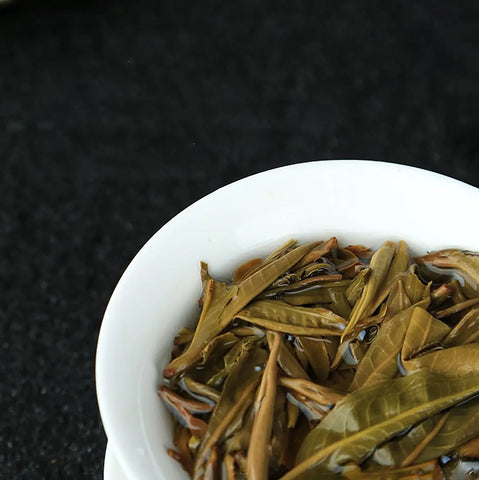
To steep loose leaf tea correctly, you need the right tools. These tools will help you achieve the perfect cup every time.
Tea Infuser
A tea infuser holds the loose leaves while allowing water to circulate. Popular choices include stainless steel infusers and silicone ones. Make sure it has enough room for the leaves to expand.
Kettle
A kettle heats water to the ideal temperature. Electric kettles often come with adjustable temperature settings, which is useful for different types of tea. If using a stovetop kettle, monitor the temperature manually.
Teapot
A teapot offers a convenient and elegant way to steep tea. Look for teapots with built-in strainers if you prefer fewer tools. Materials like glass, ceramic, and cast iron each have their own benefits.
Tea Cups and Mugs
Quality tea cups enhance your tea-drinking experience. Porcelain or ceramic cups are popular for retaining heat. Glass cups let you enjoy the color of your brew.
Thermometer
A thermometer ensures the water is at the right temperature. This is crucial since different teas require different temperatures. Digital thermometers provide quick and accurate readings.
Lao Ban Zhang

2024 Lao Ban Zhang Ripe Pu-erh Tea

2022 Lao Ban Zhang Raw Pu-erh Tea

2023 Ding Feng- Lao Ban Zhang Raw Pu-erh Tea (42g)

2024 Xiao Ban Zhang Raw Pu-erh Tea

2020 Lao Ban Zhang Raw Pu-erh Tea 125g
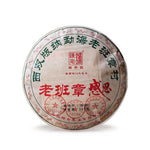
2025 Lao Ban Zhang -Gan En Raw Pu-erh Tea 357g
Tea Scoop
A tea scoop measures out the correct amount of tea leaves. Using a scoop ensures consistency in flavor. Stainless steel scoops are durable and easy to clean.
Timer
A timer keeps track of steeping time. Oversteeping can make tea bitter, so timing is crucial. Digital timers or smartphone apps work well.
Measuring Scale
A measuring scale provides precise measurements for tea leaves and water. This is especially useful for those who prefer exact proportions to achieve a consistent brew.
Water Quality and Temperature
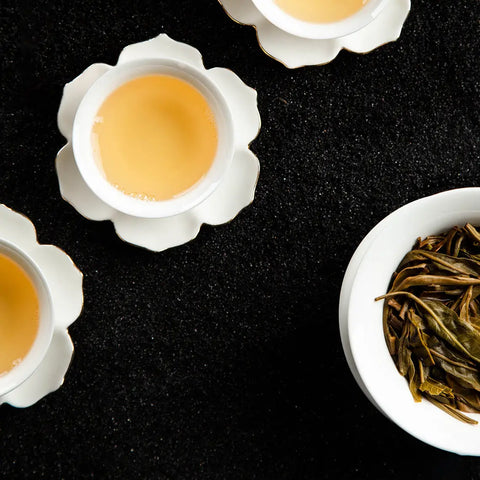
When steeping loose leaf tea, the quality of water is crucial. Always use fresh, filtered water to avoid any off-flavors. Never use distilled water as it can make your tea taste flat.
The temperature of the water is equally important. Different types of tea require different water temperatures to bring out the best flavors.
| Tea Type | Water Temperature |
|---|---|
| Green Tea | 160-180°F (71-82°C) |
| White Tea | 175-185°F (79-85°C) |
| Oolong Tea | 185-205°F (85-96°C) |
| Black Tea | 200-212°F (93-100°C) |
| Herbal Tea | 212°F (100°C) |
Green tea prefers lower temperatures to avoid bitter notes.
Black tea and herbal tea benefit from near-boiling water to release their full flavors.
Always preheat your teapot or cup by rinsing with hot water before steeping. This ensures consistent brewing temperatures.
Use a thermometer or an electric kettle with temperature settings for precise control.
Good water and the right temperature make a significant difference in your tea experience.
Steeping Techniques
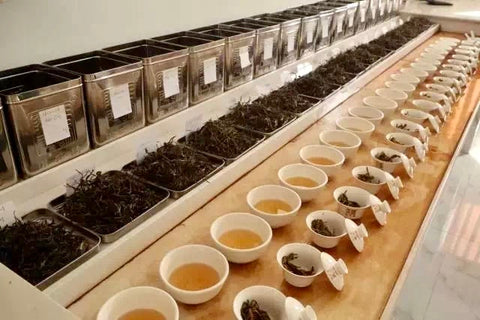
Different steeping techniques bring out unique flavors in loose leaf tea. Both the Western and Eastern methods offer distinct approaches to achieve the perfect brew.
Western Method
The Western method typically uses a larger amount of water and a longer steeping time for loose leaf tea.
- Equipment: A teapot or mug, a tea infuser or strainer, and a timer.
- Water Temperature: Generally between 175°F and 205°F (80°C – 96°C). It's best to follow specific temperature guidelines for different tea types.
- Tea Quantity: Use about 1 teaspoon of loose leaf tea per 8 ounces of water.
- Steeping Time: Black tea (3-5 minutes), green tea (2-3 minutes), white tea (4-5 minutes), and oolong tea (3-4 minutes).
After steeping, remove the leaves promptly to avoid bitterness. Western steeping is great for those who enjoy a consistent flavor and a less involved process.
Eastern Method
The Eastern method, particularly popular for green and oolong teas, involves multiple short steepings. The focus is on extracting complex flavors over several infusions.
- Equipment: A small teapot or gaiwan, a tea tray, and a timer.
- Water Temperature: Usually between 160°F and 200°F (70°C – 93°C). Adjust based on the type of tea.
- Tea Quantity: Use a higher tea-to-water ratio, about 4-5 grams per 100 milliliters of water.
- Steeping Time: Very short initial steeps (10-30 seconds) with gradually increasing times for subsequent infusions.
This method allows you to experience the evolving flavors of the tea leaves. Pour out all liquid between infusions to prevent over-extraction.
Steeping Time Guidelines
When steeping loose leaf tea, timing is crucial to achieve the perfect brew. Different types of tea require specific steeping times.
Green Tea: Steep for 1-3 minutes at 160-180°F (70-80°C).
Black Tea: Steep for 3-5 minutes at 200-212°F (93-100°C).
Oolong Tea: Steep for 3-5 minutes at 190-200°F (88-93°C).
White Tea: Steep for 4-5 minutes at 170-185°F (75-85°C).
Herbal Tea: Steep for 5-7 minutes at 205-212°F (96-100°C).
Tips for Steeping:
- Adjust steeping times based on personal taste preferences.
- Use a timer to avoid over-steeping.
- Keep the water temperature within the recommended range for each tea type.
Refer to this table for a quick overview:
| Tea Type | Steeping Time | Temperature |
|---|---|---|
| Green | 1-3 minutes | 160-180°F (70-80°C) |
| Black | 3-5 minutes | 200-212°F (93-100°C) |
| Oolong | 3-5 minutes | 190-200°F (88-93°C) |
| White | 4-5 minutes | 170-185°F (75-85°C) |
| Herbal | 5-7 minutes | 205-212°F (96-100°C) |
Be precise with the steeping times to extract the best flavor from your loose leaf tea. Adjustments can be made according to your individual taste.
Enjoy your perfect cup of tea!
Tea Types and Specific Instructions
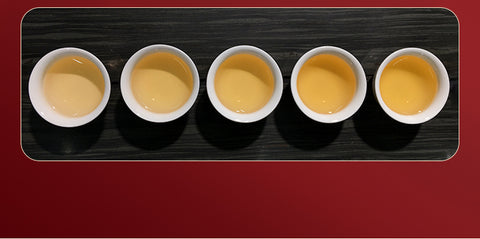
Different types of tea require specific temperatures and steeping times to bring out their best flavors. Controlling these variables ensures that you get the most out of your tea.
Green Tea
Green tea is delicate and requires precision to avoid bitterness. Use 1 teaspoon of loose leaf green tea per 8 ounces of water.
- Water Temperature: 160°F - 180°F (71°C - 82°C)
- Steeping Time: 2 - 3 minutes
Green tea may turn bitter if steeped too long or at too high a temperature. Refresh the leaves with fresh water for multiple infusions.
Black Tea
Black tea leaves are fully oxidized, resulting in a robust flavor. Use 1 teaspoon of loose leaf black tea per 8 ounces of water.
- Water Temperature: 200°F - 212°F (93°C - 100°C)
- Steeping Time: 3 - 5 minutes
Longer steeping will produce a stronger brew. Avoid oversteeping to prevent excessive bitterness.
White Tea
White tea leaves are the least processed, making them delicate. Use 1-2 teaspoons of loose leaf white tea per 8 ounces of water.
- Water Temperature: 160°F - 185°F (71°C - 85°C)
- Steeping Time: 4 - 5 minutes
White tea can be steeped multiple times. Slightly increase steeping time for subsequent infusions.
Oolong Tea
Oolong tea is partially oxidized, providing a balance between green and black teas. Use 1 teaspoon of loose leaf oolong tea per 8 ounces of water.
- Water Temperature: 185°F - 205°F (85°C - 96°C)
- Steeping Time: 3 - 5 minutes
Re-steep oolong leaves several times. Increase steeping duration by 30 seconds each time.
Herbal Tea
Herbal teas, or tisanes, derive from various plants and are naturally caffeine-free. Use 1-2 teaspoons of loose leaf herbal tea per 8 ounces of water.
- Water Temperature: 205°F - 212°F (96°C - 100°C)
- Steeping Time: 5 - 7 minutes
Herbal teas vary widely in flavor profiles and can generally withstand longer steeping times without becoming bitter.
Post-Steeping Tips
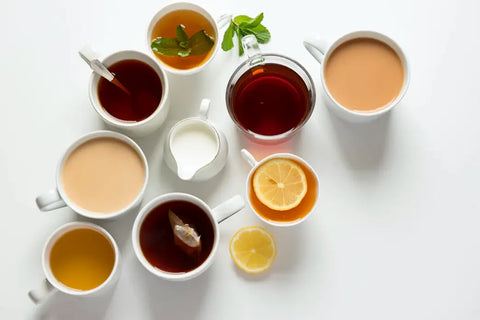
After you've finished steeping your loose leaf tea, consider how to handle the used tea leaves. You can either reuse them or dispose of them responsibly, based on your preferences.
Tea Leaf Reuse
Reusing tea leaves can be a practical and economical choice. Many high-quality loose leaf teas, such as oolong or green tea, are designed for multiple infusions.
To reuse the leaves, ensure they are not left to dry out completely between steepings. Keep them in a container with a lid, stored in the refrigerator. This maintains their freshness for subsequent uses. Typically, each following steep will be shorter because the leaves have already started releasing their flavors.
When reusing tea leaves, monitor the flavor and aroma. The initial depth of flavor usually diminishes with each steeping, so decide based on taste. Experiment with the number of infusions to suit your preference.
Disposing of Tea Leaves
When you are done with the tea leaves, proper disposal can be both simple and environmentally friendly. One option is to compost the leaves. They are biodegradable and can contribute valuable nutrients to your compost pile.
If composting is not an option, you can dispose of the leaves in your regular trash. Before doing so, ensure to strain out any excess liquid to avoid creating a mess. Avoid flushing tea leaves down the drain as they can cause clogs and plumbing issues.
Ensure any packaging, such as tea bags or sachets, is disposed of according to local recycling guidelines if applicable. Strive to minimize waste by considering reusable options like tea infusers and strainers.
← Older post Newer post →
